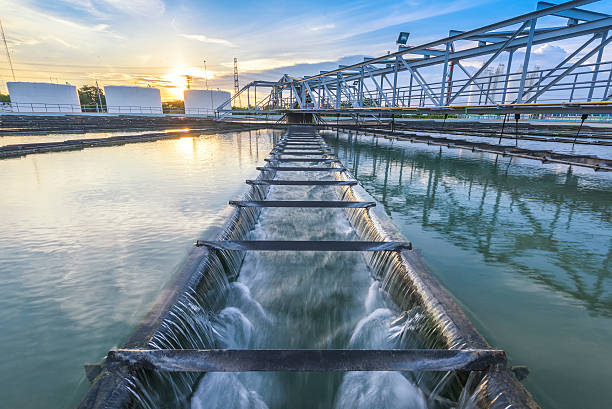The right water treatment polymer helps in reducing sludge buildup.
The right water treatment polymer helps in reducing sludge buildup.
Blog Article
Discover How Water Treatment Polymer Works to Enhance Your Water Filtration Process
Water treatment polymers have actually arised as necessary representatives in the world of water filtration, operating as both flocculants and coagulants to significantly improve the elimination of pollutants. By promoting particle gathering and boosting sedimentation effectiveness, these compounds not just improve water quality yet also streamline functional procedures. As we check out the detailed devices behind their effectiveness, the effects for both ecological sustainability and price reduction end up being increasingly obvious. What particular kinds of polymers exist, and how do they customize their actions to numerous filtration systems?
What Are Water Therapy Polymers?
Water therapy polymers are specialized chemical substances used in numerous procedures to improve the performance of water purification and therapy systems. These polymers play a critical duty in the elimination of impurities, including suspended solids, organic issue, and pathogens from water resources. They are commonly categorized into all-natural, synthetic, and semi-synthetic polymers, each with distinctive qualities and applications.

Water therapy polymers function as flocculants, coagulants, or dispersants, promoting the pile of particulates for simpler removal. Their performance can considerably decrease the price and power associated with traditional treatment methods, making them necessary elements in metropolitan and industrial water treatment facilities. As water high quality policies come to be much more stringent, the demand for effective water therapy polymers continues to grow, emphasizing their importance in modern water administration methods.
System of Action
The mechanism of action of water treatment polymers involves several crucial procedures that boost the elimination of pollutants from water. Mostly, these polymers serve as flocculants, advertising the gathering of put on hold bits into bigger clusters called flocs - water treatment polymer. This aggregation occurs with charge neutralization, where the cationic polymers connect with negatively billed particles, minimizing their electrostatic repulsion and permitting them to integrate
Once flocs are formed, their enhanced dimension and weight assist in sedimentation or purification, hence properly eliminating them from the water column. Furthermore, some polymers might exhibit adsorptive residential or commercial properties, binding to specific contaminants and enhancing their elimination effectiveness. This dual action not just enhances the physical splitting up of particles however also aids in the decrease of liquified raw material and heavy steels.

Types of Water Therapy Polymers
Many kinds of water therapy polymers are utilized in numerous applications to improve the effectiveness of pollutant removal procedures. These polymers can be broadly categorized right into 3 major types: flocculants, coagulants, and dispersants.

Coagulants, on the various other hand, are basics commonly low-molecular-weight compounds that counteract the fee of colloidal fragments. They promote the development of bigger aggregates, which can after that be removed much more easily. Usual coagulants consist of aluminum sulfate and ferric chloride, commonly utilized combined with flocculants to improve total efficiency.
Dispersants serve a various objective; they stabilize bits in suspension, preventing them from agglomerating. This is great site particularly crucial in applications such as oil-water separation, where it is vital to maintain impurities spread till they can be effectively removed.
The option of the appropriate polymer type depends upon the specific features of the water being treated and the desired high quality of the last effluent.
Advantages of Using Polymers
Polymers play an important duty in enhancing the effectiveness of water therapy procedures, using a range of advantages that contribute to boosted functional performance. Among the key benefits of using polymers is their capability to considerably boost the efficiency of particle removal throughout coagulation and flocculation. By promoting quicker and a lot more effective gathering of particles, polymers assist in the clarification of water, resulting in better outcome.
Furthermore, polymers can boost the sedimentation procedure, resulting in lowered sludge volumes. This not only decreases disposal expenses but likewise minimizes the environmental effect related to waste administration. The usage of water treatment polymers can lead to enhanced purification rates, permitting for a lot more effective usage of resources and lowered functional downtime.
Additionally, polymers help in supporting the water chemistry, which can mitigate concerns associated with scaling and deterioration in therapy systems. This stabilization contributes to the durability and dependability of tools, eventually decreasing upkeep costs. The flexibility of polymers enables their application throughout various water treatment scenarios, making them invaluable tools for accomplishing governing conformity and guaranteeing public health and wellness security.
Applications in Water Filtration

Water purification processes utilize a range of polymers to improve treatment effectiveness and make sure the removal of pollutants. These polymers play important functions in coagulation, flocculation, and sedimentation, successfully accumulating suspended particles and facilitating their removal from water. Coagulants, such as polyaluminum chloride, interact with impurities, neutralizing their charges and advertising the formation of larger aggregates, called flocs.
Along with traditional coagulants, specialty polymers are used in membrane layer filtering systems. These polymers improve membrane performance by reducing fouling and expanding functional life expectancy. Polymeric adsorbents are used to target particular impurities, consisting of heavy steels and natural compounds, providing a customized technique to water treatment.
Polymers additionally discover applications in sludge dewatering processes, improving the efficiency of solid-liquid splitting read here up - water treatment polymer. By improving the dewatering qualities of sludge, these polymers minimize disposal expenses and ecological impact
Conclusion
In verdict, water therapy polymers play an important duty in enhancing water purification processes by acting as reliable flocculants and coagulants. On the whole, the incorporation of these specialized compounds is necessary for optimizing water treatment systems and guaranteeing reliable purification results.
Report this page